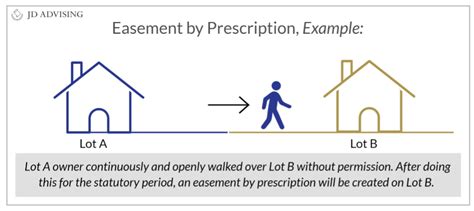Prescriptive Easement Cost: Is It Within Your Reach?
Navigating property rights can be complex, and understanding the costs associated with acquiring a prescriptive easement is crucial. A prescriptive easement grants someone the right to use another person's land after openly, continuously, and exclusively using it for a specific period (usually a set number of years, varying by state). While seemingly straightforward, the process and associated costs can be surprisingly intricate. This article explores the financial implications of pursuing a prescriptive easement and helps you determine if it's a viable option for your situation.
What Are the Potential Costs of Obtaining a Prescriptive Easement?
The costs associated with obtaining a prescriptive easement aren't fixed and can vary significantly depending on several factors. These factors include:
-
Legal Fees: This is often the most substantial cost. You'll need a skilled attorney specializing in real estate law and easement disputes. Their fees can range from hourly rates to a contingency fee based on the outcome. Expect to pay for consultations, document preparation (including the initial claim and any subsequent court filings), and representation throughout the legal process, potentially including court appearances and negotiations.
-
Survey Costs: Establishing continuous and open use for the prescribed period usually requires a land survey to clearly define the area claimed for the easement. This survey will be crucial evidence in any legal proceedings. Costs vary depending on the size and complexity of the land involved.
-
Expert Witness Fees: Depending on the circumstances, you might need expert witnesses to testify about your continuous use of the property, such as surveyors, land use specialists, or other relevant professionals. Their fees can be substantial.
-
Court Costs: If the case goes to court, you'll incur costs associated with filing fees, court reporter fees, and other administrative expenses. These can add up quickly.
-
Negotiation Costs: While pursuing a prescriptive easement through the courts is often necessary, attempting negotiation with the property owner beforehand is always recommended. Even if this doesn't lead to a voluntary agreement, it can help reduce legal costs later.
How Much Does It Typically Cost?
Unfortunately, there's no single answer to how much a prescriptive easement will cost. The total expense can range from a few thousand dollars for a straightforward case with amicable negotiation to tens of thousands of dollars for complex litigation involving extensive legal battles and expert testimony. The complexity of the case, the location, and the experience and hourly rate of your legal representation will all influence the final cost.
Can I Afford a Prescriptive Easement?
Before pursuing a prescriptive easement, carefully assess your financial resources. Consider the following:
-
Budgeting: Create a detailed budget that includes all potential costs: legal fees (including a contingency for unexpected expenses), survey costs, potential expert witness fees, and court costs.
-
Legal Consultation: Schedule a consultation with a real estate attorney experienced in easement disputes. They can provide a more accurate cost estimate based on your specific situation and the details of your claim.
-
Alternatives: Explore alternative solutions, such as negotiating a purchase of an easement or finding an alternative route. These options might be more cost-effective than pursuing a prescriptive easement through litigation.
Frequently Asked Questions
How long does it take to acquire a prescriptive easement?
The time it takes to acquire a prescriptive easement varies greatly depending on several factors, including the complexity of the case, the jurisdiction's laws, and the willingness of the property owner to negotiate or litigate. The process can range from several months for a straightforward, amicable resolution to several years if the case involves extensive litigation.
What evidence is needed to establish a prescriptive easement?
Establishing a prescriptive easement requires strong evidence demonstrating open, notorious, continuous, and uninterrupted use of the property for a legally defined period. This evidence might include photographs, survey maps, witness testimony, and property tax records. Your attorney can guide you on gathering the necessary evidence.
What happens if I lose the case?
If you lose the case, you will be responsible for all the legal costs you incurred during the process. This emphasizes the importance of thorough preparation, strong evidence, and a comprehensive cost assessment before embarking on this legal path.
Successfully obtaining a prescriptive easement requires careful planning, strong evidence, and skilled legal representation. By understanding the potential costs involved and exploring all available options, you can make an informed decision about whether pursuing a prescriptive easement is financially feasible and strategically sound for your situation. Remember to always consult with a qualified attorney to assess your specific circumstances and receive personalized advice.

